Optimal Temperatures: How Temperature Affects Organ Viability
Temperature is critical for organ viability during transplantation, as it directly relates to how temperature affects organ viability. It impacts metabolism, energy levels, and cell function. This article details how temperature management preserves organs and examines different preservation techniques.
Key Takeaways
Temperature plays a critical role in organ preservation by influencing cellular metabolism and ATP levels, essential for organ viability.
Advanced techniques such as Hypothermic Machine Perfusion (HMP) and Normothermic Machine Perfusion (NMP) significantly enhance organ preservation and functionality compared to traditional Static Cold Storage (SCS).
Future directions in organ preservation focus on innovative techniques, including cryopreservation and subnormothermic perfusion, alongside advancements in artificial intelligence for better donor-recipient matching.
The Importance of Temperature in Organ Preservation
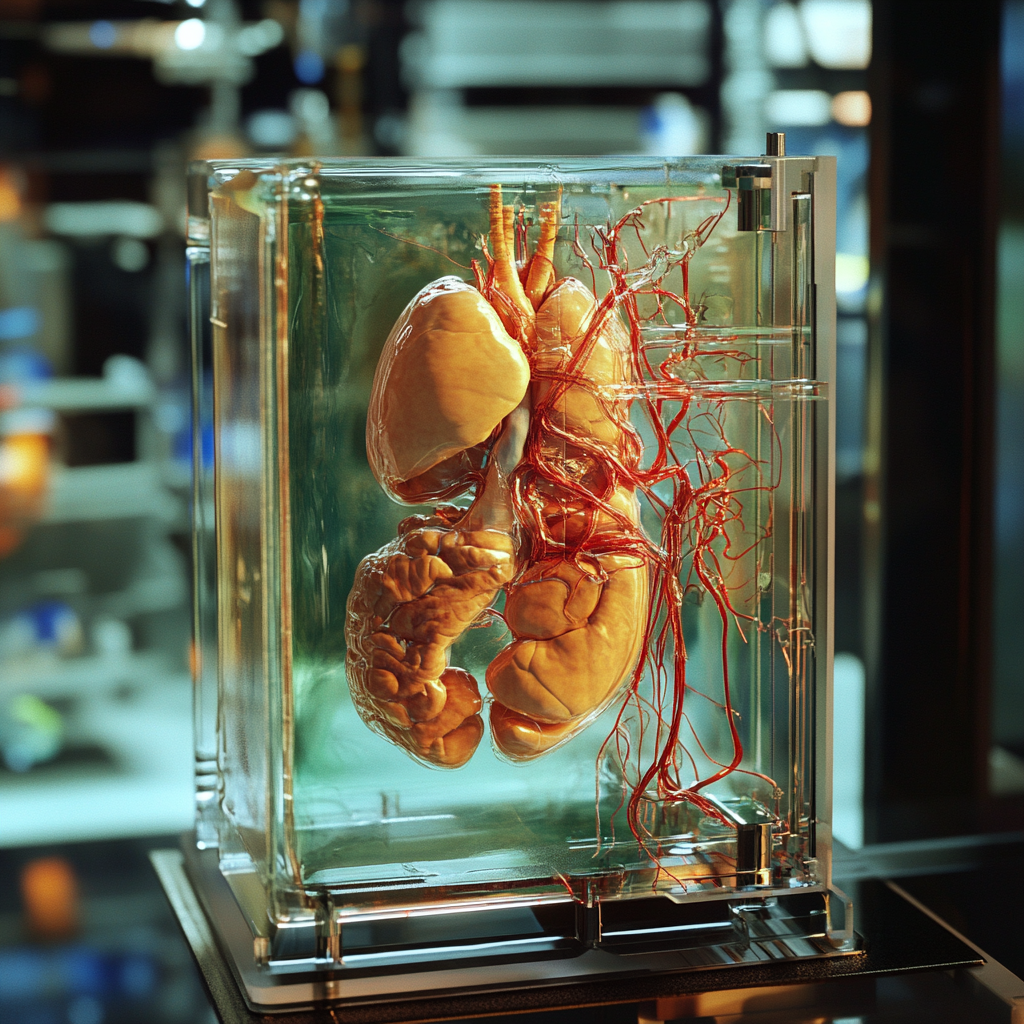
Temperature critically influences cellular metabolism and energy levels in organ preservation. At lower temperatures, cellular metabolism decreases significantly, which helps in preserving energy substrates like ATP during organ storage. Every 10°C drop in temperature roughly halves metabolic rates, which is crucial for maintaining organ viability during the preservation process.
ATP levels are a crucial indicator of organ viability. The recovery of ATP post-preservation is closely linked to the temperature at which the organ is stored. Lower temperatures help maintain higher ATP levels, enhancing the chances of successful organ transplantation. This relationship underscores the importance of temperature management in organ preservation.
Temperature also affects cellular functions, impacting the survival of preserved organs. A well-preserved organ must maintain its cellular integrity and function, which is highly dependent on the temperature during storage. Therefore, the right temperature is essential for optimal organ preservation and subsequent successful transplantation.
Organ preservation solutions and techniques are designed to maintain the ideal temperature for stored organs. These solutions provide the necessary environment to reduce metabolic rates and preserve cellular energy, ensuring that organs remain viable pre-transplantation.
Understanding the significance of temperature in organ preservation is the first step in appreciating the complexity and precision required in this field. It sets the stage for exploring various preservation techniques and their impact on organ viability.
Static Cold Storage (SCS) and Its Limitations
Static Cold Storage (SCS) is the most commonly used method for organ preservation, primarily due to its simplicity and cost-effectiveness. This technique involves storing organs at temperatures around 4°C, significantly slowing down their metabolic processes. The low temperature helps preserve energy substrates like ATP, which are critical for organ viability during storage.
Despite its widespread use, SCS has notable limitations. Extended use of static cold storage can lead to parenchymal damage due to ischemia and lack of oxygen. This damage occurs because, although metabolism is slowed, it is not entirely halted, leading to gradual cellular deterioration over time.
SCS’s simplicity and lower cost make it a practical choice for many transplant centers, but its limitations underline the need for advanced methods that maintain organ viability over longer periods.
Hypothermic Machine Perfusion (HMP) for Enhanced Preservation
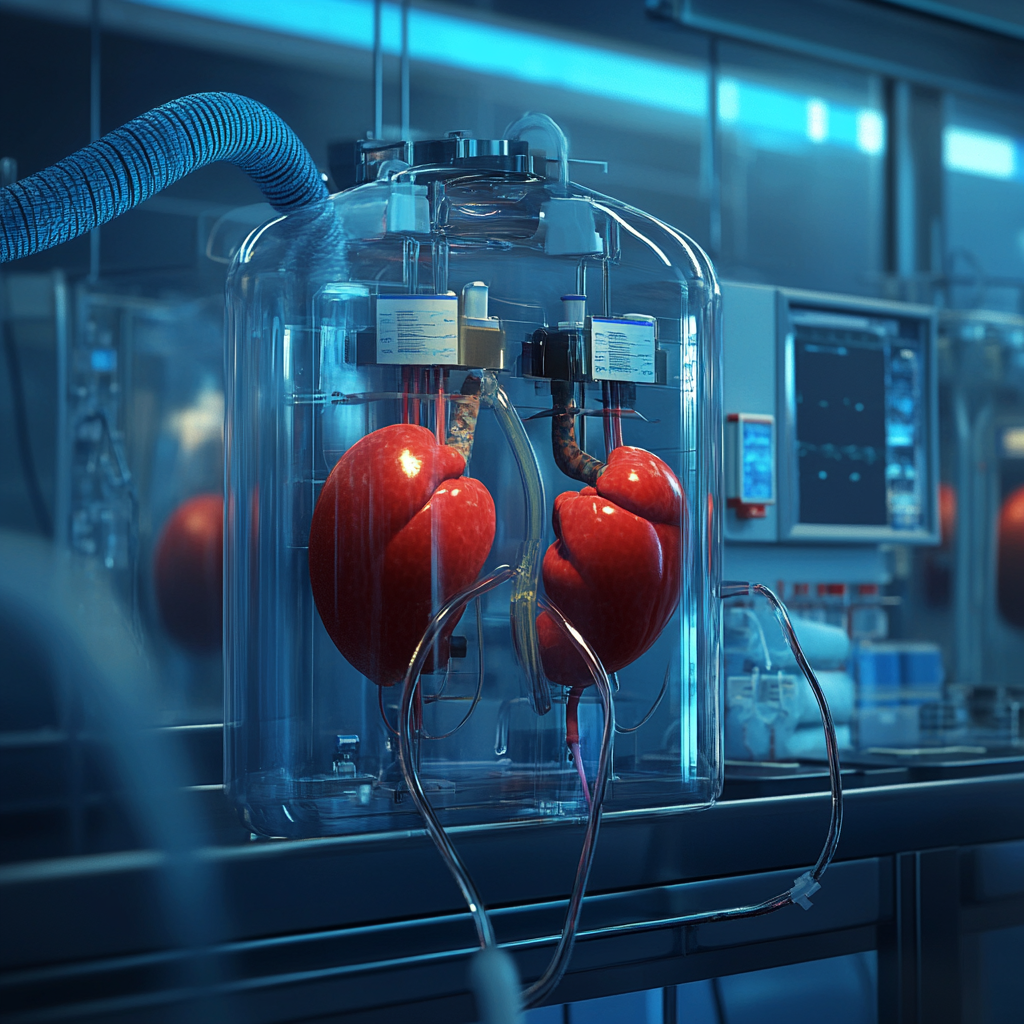
Hypothermic Machine Perfusion (HMP) is emerging as a superior alternative to static cold storage for organ preservation. Unlike Static Cold Storage (SCS), HMP involves the continuous perfusion of cold preservation solution through the organ, typically at temperatures between 4°C and 10°C. This dynamic method maintains cellular metabolism at low rates, reducing ischemic injury and enhancing organ viability.
HMP is one of the three main organ preservation techniques, alongside Static Cold Storage and Normothermic Machine Perfusion. It is particularly effective in maintaining ATP levels, which are crucial for organ function and viability. HMP preserves the organ’s cellular integrity and energy status by continuously supplying oxygen and nutrients.
Research has shown that HMP significantly reduces ischemic injury compared to static cold storage, leading to improved outcomes post-transplantation. The technique utilizes advanced perfusion methods and temperature management strategies to optimize organ preservation. Further studies on selective perfusion temperatures may provide deeper insights into the benefits of hypothermic conditions on organ viability.
The success of HMP in enhancing organ preservation is evident in its application across various organ types, including the liver, kidney, and pancreas. HMP ensures better organ viability pre-transplantation by maintaining low metabolic rates and conserving energy, making it an essential component of organ transport for transplantation success.
Normothermic Machine Perfusion (NMP): Mimicking Physiological Conditions
Normothermic Machine Perfusion (NMP) represents a significant advancement in organ preservation, aiming to mimic physiological conditions by maintaining organs at body temperature (37°C). This method supplies necessary metabolic substrates during the perfusion process, keeping the organ in a functional state.
Devices such as the OrganOx metra® are employed for NMP, consisting of components like oxygenators, blood reservoirs, and pumps to replicate the body’s natural environment. NMP enhances tissue ATP recovery and overall organ function by maintaining organs at physiological temperatures, compared to traditional static cold storage.
Research has shown that organs preserved using NMP exhibit reduced inflammation and improved graft regeneration, leading to better outcomes post-transplantation. This technique also reduces the incidence of ischemia-reperfusion injury (IRI), a common complication in organ transplantation.
Normothermic regional perfusion techniques are emerging as effective methods for enhancing organ viability before transplantation. NMP improves organ viability and function by closely mimicking human body conditions, providing a more natural environment. Additionally, ex situ organ perfusion plays a crucial role in this process.
The adoption of NMP signifies a shift towards more dynamic and physiologically relevant preservation methods, offering promising results for the future of organ transplantation.
Subnormothermic Perfusion: Balancing Metabolic Needs
Subnormothermic Machine Perfusion (SNMP) provides a middle-ground approach in organ preservation, balancing reduced metabolic demands and improved organ viability. This technique operates at temperatures between hypothermic and normothermic ranges, typically around 22°C. The metabolic rates at 4°C are significantly lower, only 40% of those at 37°C, demonstrating the efficiency of subnormothermic conditions in preserving cellular energy. Maintaining a temperature that reduces metabolic needs without completely halting cellular functions makes SNMP a practical solution for organ preservation.
SNMP represents a simpler and less costly alternative to normothermic machine perfusion, making it more feasible for widespread clinical application. This balance of metabolic efficiency and practicality makes SNMP an attractive option for optimal organ preservation.
Did you know that you can get from Manhattan to JFK in under 5 minutes without driving?
Blade offers seamless helicopter transfers from our West 30th Street Lounge in Manhattan to JFK Airport in just 5 minutes from $195 per seat.
Skip the traffic and ditch the stress with Blade's year-round airport service.

Controlled Oxygenated Rewarming (COR) Techniques
Controlled Oxygenated Rewarming (COR) gently prepares organ grafts for transplantation by gradually increasing the temperature. This method combines cooling and warming to enhance cellular recovery and reduce the risk of rewarming injury.
The temperature range used in COR is from 8°C to 20°C, promoting gradual warming for cellular recovery. Initial preservation methods like Static Cold Storage and Hypothermic Machine Perfusion set the stage for subsequent rewarming, ensuring a smooth transition to higher temperatures.
COR has been shown to enhance ATP levels, increase bile production, reduce AST and ALT levels, and decrease pro-inflammatory cytokines in liver tissue, significantly improving organ function post-transplantation.
Cryopreservation and Subzero Storage Innovations
Cryopreservation and subzero storage represent the cutting edge of organ preservation technologies. These methods aim to extend storage durations from weeks to months, potentially transforming the field of organ transplantation.
One of the critical challenges in cryopreservation is ice formation, which can damage cells and compromise organ viability. However, advancements in partial freezing have shown promise. Research has demonstrated that rodent livers can be partially frozen at temperatures as low as -15°C, extending storage durations significantly.
These innovations hold the potential to revolutionize organ preservation, making more organs available for transplantation and improving the outcomes of transplant procedures. The ongoing research in cryopreservation and subzero storage is a testament to the relentless pursuit of excellence in organ preservation.
Organ-Specific Preservation Strategies
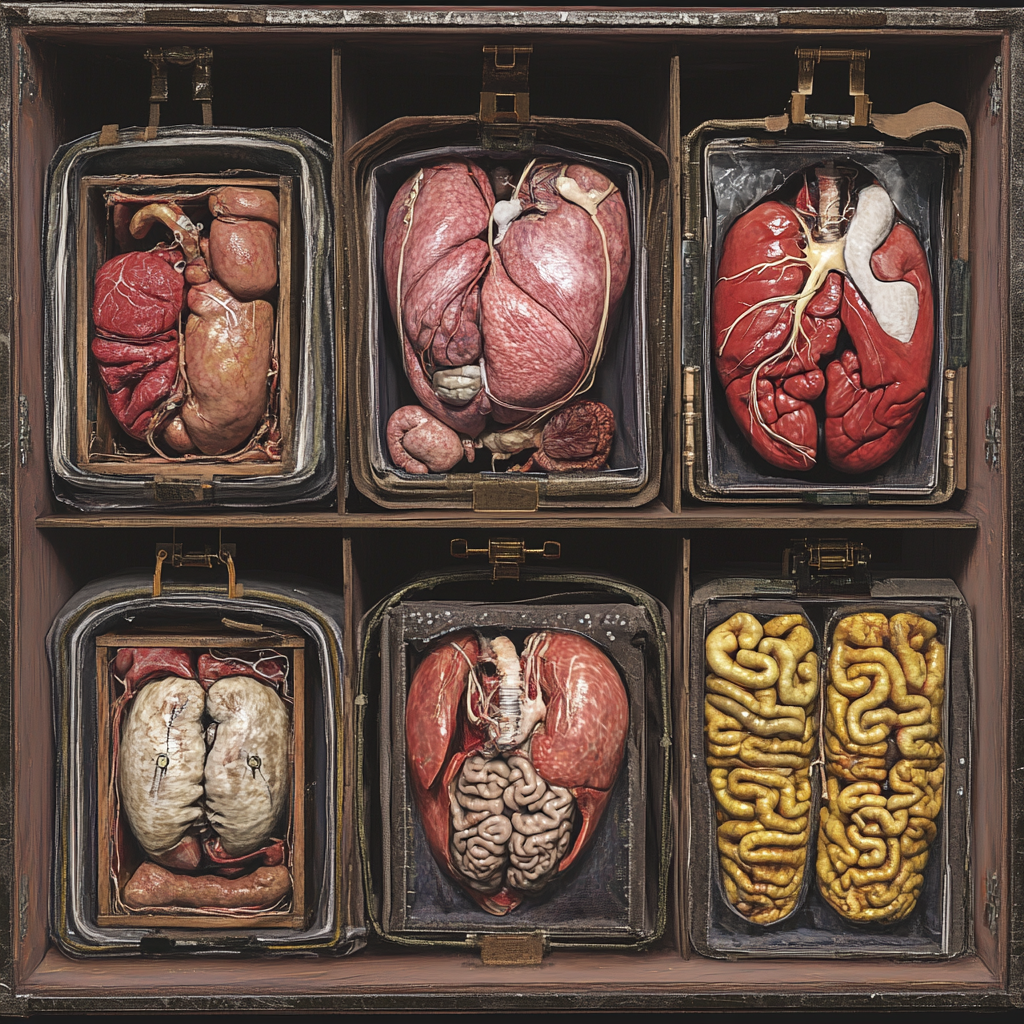
Different organs exhibit varying tolerance to cold and warm ischemia, necessitating specific temperature strategies for optimal preservation. These differences highlight the need for tailored preservation techniques to ensure the viability of each organ type.
This section delves into organ-specific preservation strategies for the liver, kidney, and pancreas, exploring the unique challenges and solutions for each.
Liver Preservation Techniques
Liver preservation requires specific techniques to maintain its viability and function. Normothermic Machine Perfusion (NMP) allows for the assessment of liver graft viability and reconditioning of suboptimal organs before transplantation. This method has been associated with lower peak levels of liver enzymes post-transplant, indicating improved liver function compared to static cold storage.
Dual Hypothermic Oxygenated Machine Perfusion (DHOPE) is another technique shown to maintain higher ATP levels in liver grafts compared to static cold storage. Innovative methods like supercooling have recently enabled the preservation of liver grafts at temperatures as low as -6°C for up to 96 hours.
Controlled oxygenated rewarming further enhances liver function post-transplant compared to traditional methods. These advanced techniques collectively improve liver viability, reducing the risk of early allograft dysfunction and increasing the chances of successful liver transplantation.
Kidney Preservation Methods
Kidney preservation primarily focuses on Hypothermic Machine Perfusion (HMP), which has been established as a superior method for maintaining ATP levels and preserving kidney function. Subnormothermic perfusion at 22°C enhances energy metabolism in kidney grafts, significantly boosting ATP levels compared to lower temperature storage.
This method also reduces histological damage in grafts compared to those preserved at colder temperatures, highlighting the importance of temperature management in kidney preservation. The increased ATP concentrations during subnormothermic perfusion are attributed to maintained mitochondrial activity at this temperature.
These techniques ensure optimal graft preservation prior to kidney preservation, reducing the risk of delayed graft function and improving the outcomes of kidney transplantation.
Pancreas Preservation Approaches
Pancreas preservation faces unique challenges, including the lack of recognized viability markers and the susceptibility of the vascular endothelial lining to machine perfusion flow. Dual arterial Hypothermic Machine Perfusion (HMP) at temperatures of 4–7°C is critical for maintaining islet cell viability.
After HMP treatment, increased systemic amylase levels suggest enhanced pancreatic function, although ATP levels are lower in DCD pancreata compared to DBD pancreata, highlighting viability concerns. ATP Synthetase Complex V serves as a viability marker, indicating ATP production and overall pancreatic health.
Cryoprotectants are essential in cryopreservation, preventing ice crystal formation and allowing for the successful storage of organs at subzero temperatures. These approaches collectively improve pancreas preservation, enhancing the success rates of pancreas transplantation.
Did you know that you can get from Manhattan to JFK in under 5 minutes without driving?
Blade offers seamless helicopter transfers from our West 30th Street Lounge in Manhattan to JFK Airport in just 5 minutes from $195 per seat.
Skip the traffic and ditch the stress with Blade's year-round airport service.

Addressing Ischemia-Reperfusion Injury (IRI)
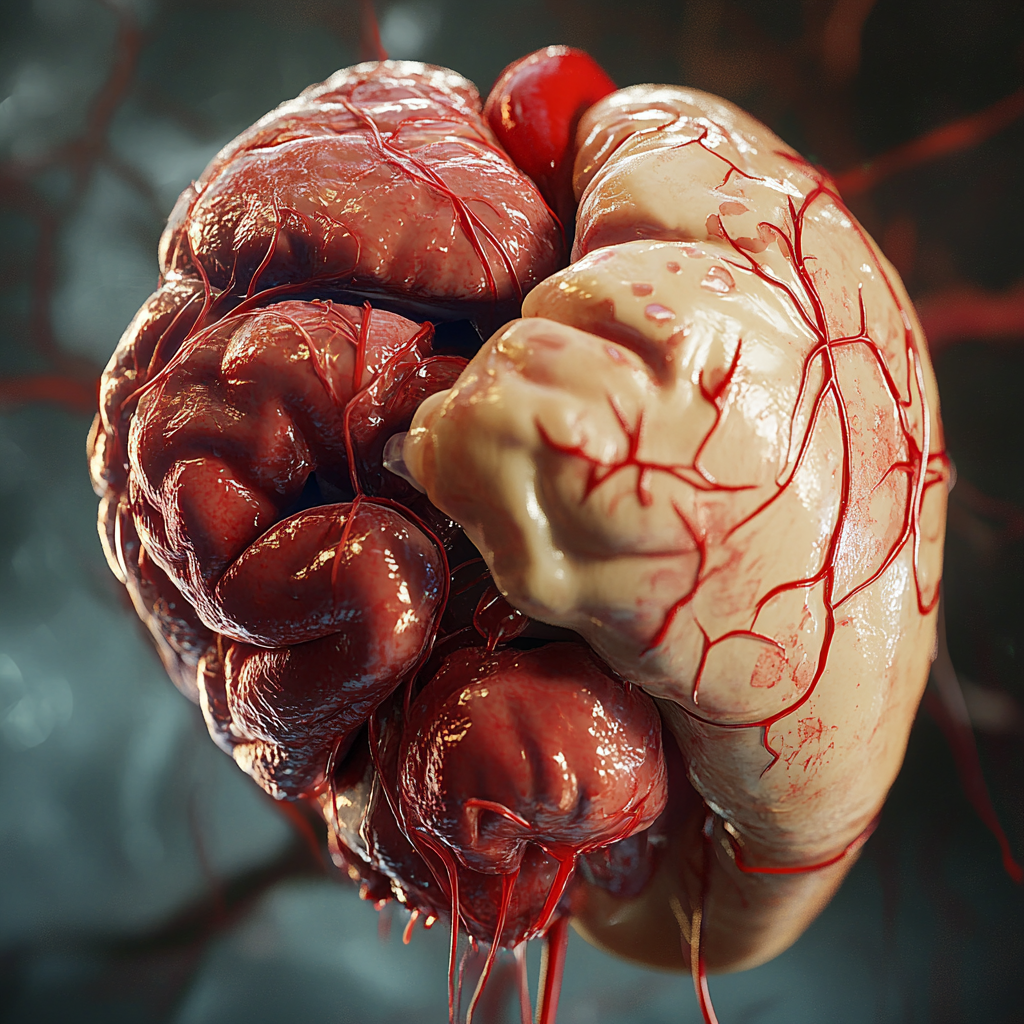
Ischaemia reperfusion injury (IRI) is a significant factor in post-transplant complications, and temperature management plays a crucial role in mitigating its effects. Preservation temperature significantly influences ATP levels in pancreatic tissues, highlighting the need for careful temperature management during storage.
IRI can be exacerbated by prolonged warm ischemia followed by cold preservation. Identifying and targeting specific molecular pathways in IRI could lead to new therapeutic strategies to improve organ transplant outcomes. The accumulation of succinate during ischemia is closely linked to the generation of reactive oxygen species, contributing to IRI.
Neutrophils exhibit both pro-inflammatory and anti-inflammatory properties during liver transplant IRI. Gradual temperature increase during controlled oxygenated rewarming is crucial for reducing the risk of rewarming injury in liver grafts.
Future Directions in Organ Preservation
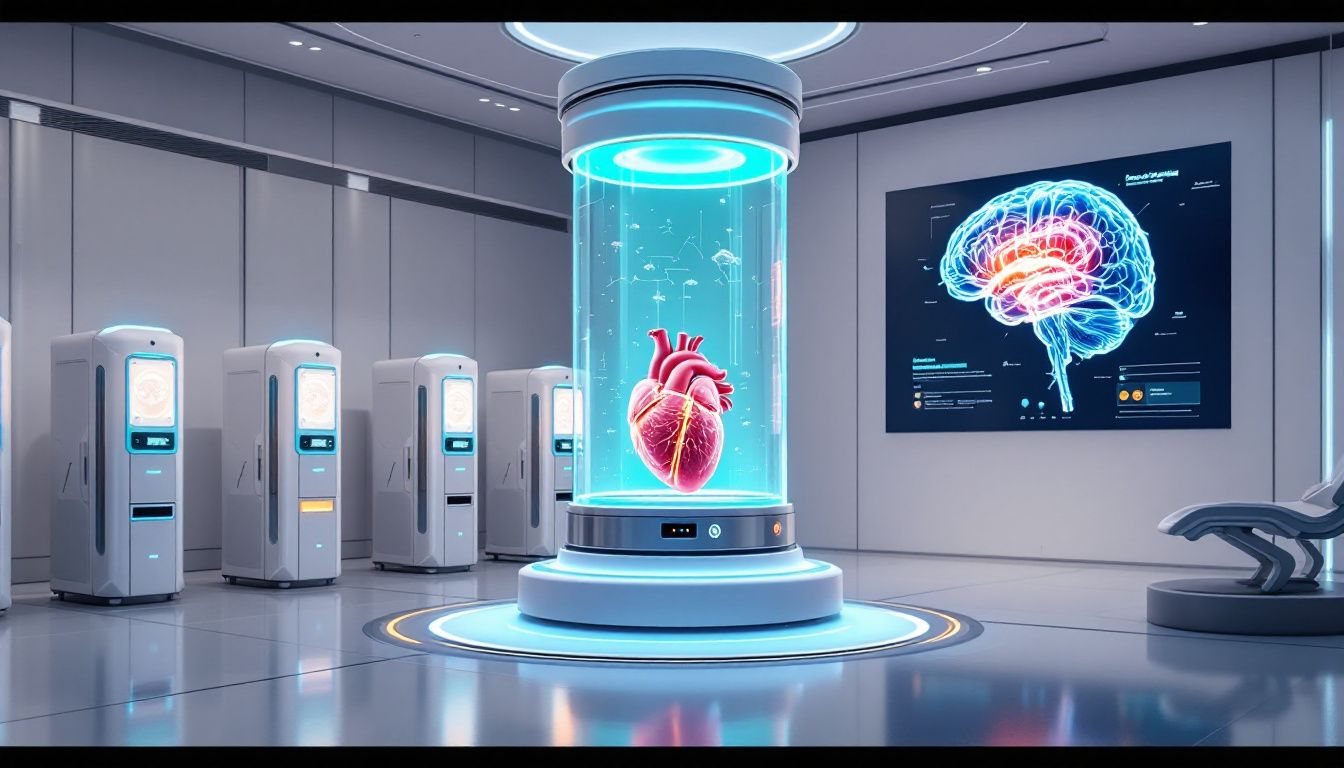
The future of organ preservation is moving beyond traditional ice storage methods to embrace advanced techniques that enhance organ availability and extend preservation durations. Emerging technologies include advanced perfusion methods, subzero and isochoric storage, and the integration of artificial intelligence to address time constraints in organ air transport and improve donor-recipient matching.
Subnormothermic perfusion is a promising technique due to its simplicity and cost-effectiveness compared to normothermic machine perfusion, making it more feasible for clinical applications. This method balances metabolic needs and organ viability, potentially becoming a standard practice in the near future.
Innovations in preservation solutions aim to reduce tissue damage and enhance long-term organ viability. These solutions are designed to provide the optimal environment for organs during storage, further improving their functionality post-transplantation.
Artificial intelligence is expected to revolutionize organ transplant procedures by improving donor-recipient matching and predicting the viability of donor organs. This technology could lead to a more successful human organ transplant and better outcomes for recipients.
Successful organ transplantation following extended criteria donor subzero preservation has been limited, but recent advancements show promise. These techniques could enable longer storage times and the recovery of marginal donor organs, significantly increasing the pool of available organs for transplantation.
Bottom Line: How Temperature Affects Organ Viability
The intricate dance of temperature and organ preservation is a testament to the advancements in medical science. From static cold storage to advanced techniques like hypothermic and normothermic machine perfusion, each method offers unique benefits and challenges. Understanding the importance of temperature management is crucial for improving organ viability and transplantation outcomes.
As we look to the future, the integration of innovative technologies and solutions promises to revolutionize the field of organ preservation. By continuing to explore and refine these techniques, we can hope to increase the success rates of organ transplants and save more lives. The journey of organ preservation is far from over, and the future holds endless possibilities for improvement and innovation.
FAQs about How Temperature Affects Organ Viability
What is the most common method of organ preservation?
The most common method of organ preservation is Static Cold Storage (SCS), which maintains organs at approximately 4°C. While it is straightforward and economical, this technique has limitations due to potential ischemia and cellular damage over time.
How does Hypothermic Machine Perfusion (HMP) improve organ preservation?
Hypothermic Machine Perfusion (HMP) significantly improves organ preservation by continuously delivering cold preservation solution, which reduces ischemic injury and maintains ATP levels essential for organ viability. This method effectively sustains low metabolic rates, ensuring better preservation outcomes.
What are the benefits of Normothermic Machine Perfusion (NMP)?
Normothermic Machine Perfusion (NMP) significantly enhances organ preservation by maintaining physiological temperature, improving ATP recovery, reducing inflammation, and promoting graft regeneration, which leads to better transplant outcomes. This innovative technique represents a substantial advancement over traditional preservation methods.
Why is Subnormothermic Perfusion considered a middle-ground approach?
Subnormothermic Perfusion (SNMP) is considered a middle-ground approach because it functions at temperatures that balance reduced metabolic demands with enhanced organ viability, offering a simpler and more cost-effective alternative to normothermic machine perfusion. This makes it a practical option for clinical use.
What role does temperature management play in addressing Ischemia-Reperfusion Injury (IRI)?
Temperature management is crucial for alleviating Ischemia-Reperfusion Injury (IRI) by preserving ATP levels and minimizing rewarming injury, ultimately enhancing organ transplant outcomes. Proper handling of temperature during storage directly influences the success of transplants.
Disclaimer:
Please be aware that the content on this page has been generated by using artificial intelligence language models and may contain errors, inconsistencies, or outdated information. It is provided as-is without any warranties or guarantees of accuracy. We strongly recommend using this content as a starting point for further research. We disclaim any liability for damages or losses resulting from the use or reliance on this content.